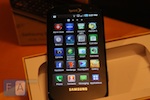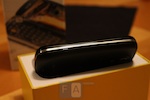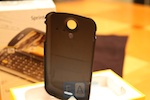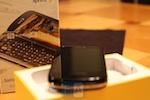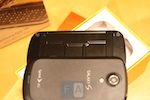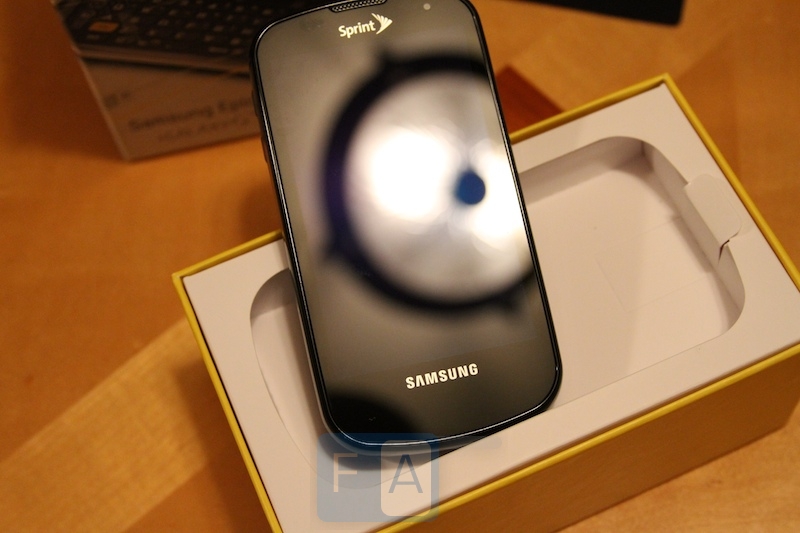
Here is the FoneArena Samsung EPIC 4G Review where we take a deep look into the latest Android phone for Sprint USA.This year Samsung has taken the mobile market by storm after releasing their latest line of Android based phones called the Galaxy S series. In the US market alone Samsung has released one Galaxy S variation for each of the four major carriers. T-Mobile USA has the Vibrant, AT&T released the Captivate, Verizon released the Fascinate, and Sprint brings us the Epic 4G. Each has its own characteristics defining its place in the Galaxy S line.
We are going to focus on the Epic 4G which boast a 1GHz Hummingbird processor, stunning Super AMOLED HD-like display and is powered by Sprints blazing fast 4G network. Now that we have the formalities out of the way let’s get down and dirty with this review.
Box Contents
The Epic 4G comes in a small sleek Sprint branded box containing the following:
- Samsung Epic 4G
- Battery
- User Guides
- AC Charger
- USB Cable
- Headphones
- SD Card micro adapter
Design and Build Quality
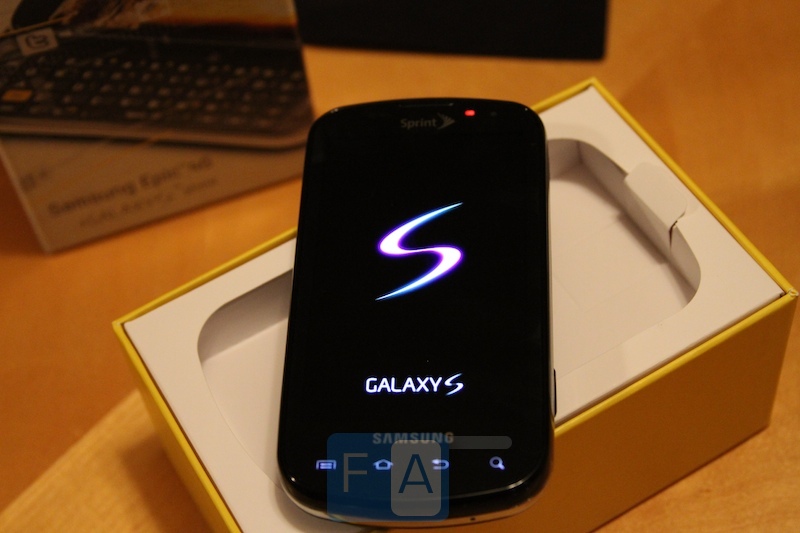
Like other phones in the Samsung Galaxy S series the design of the Epic 4G is sleek and aims to be both functional and aesthetically pleasing. The black plastic housing surrounded by chrome metal strip running along the edges make it an attractive phone. While initially concerned about the phone feeling cheap and toy-like, we were pleasantly surprised at how solid the phone felt the more we held it.
The back of the phone is made up of a thin piece of plastic which is decorated with a sparkle finish. By itself it is rather flimsy and doesn’t feel strong. However once you snap it back on the phone it is form fitting and doesn’t wiggle or give at all. Fully Assembled the back feels solid and ready for the abuse it will receive with years of potential use. Like many modern phones the back of the Epic 4G is rounded off at the sides and corners. From top to bottom the bask contains a slight slope inward coming to a raised bottom lip to allow for easier grip. It wasn’t a perfect fit for our hands but should provide a good feel for most users.
As with any slider based phone a lot of design and engineering goes into getting the slider mechanism just right. In the case of the Epic 4G we feel Samsung did a great job. The slide mechanism is slightly too easy to push initially but does prevent any accidental sliding while in your pocket or unintentional bumping with your hands. With the screen open there is very little movement between the sliding rail hinges and the screen. We opened and closed the phone well over 500 times and never had any problems with it snagging. Overall a great feeling and performing slider.
Weighing in at 5.47 ounces and 14.24mm thick the Epic 4G is not the lightest or thinnest of the Galaxy S series however it doesn’t feel overly large when carrying it around in your pocket for extended periods. When you consider what the phone has to offer with its huge full qwerty keyboard and large 4 inch Super AMOLED screen the specs don’t seem overly large.
Screen
The screen on the Epic 4G is nothing short of stunning. Bright vivid colors provided by the 4 inch 480 x 800 resolution Super AMOLED display make this device easily one of the best media consumption devices on the market. One of the compromises of the AMOLED technology used to be lack of visibility in direct sunlight. With the advent of Super AMOLED this has been improved significantly. Though not as bright, viewing the screen in direct sunlight is possible.
The Epic 4G is controlled with an extremely sensitive capacitive touch screen. In our test the device responded to the slightest touch providing a great experience when navigating. While a full keyboard is the preferred typing method the touch screen works great thanks to the capacitive display. Until you see it with your own eyes words won’t’ do the screen justice. It really is that good.
Keys and Controls

Like most touch screen phones there are a minimal amount of hardware buttons on the base of the unit. At the bottom you have four touch sensitive buttons. The menu, home, back and dedicated search button. In theory touch sensitive buttons are nice however using them tends to be a different story. Generally speaking they work well but you do have to press them several times in some circumstances to get them to respond. This can be frustrating at times when you are attempting to bring up a menu or close an application using the back button. When the phone is in sleep mode the button backlights are out. Upon waking the phone the buttons are displayed and ready for use.
On the right side of the phone you have a dedicated camera button which launches the camera application if the phone is active. Half pressing the camera button performs a decently fast auto-focus function allowing you to focus on your intended subject.
In the right top corner you have the power/sleep/wake button. This button performs multiple functions depending on the state of the phone. These functions are self explanatory, power, sleep, wake. Need we say more.
On the left side of the phone you have a volume toggle that moves the volume up and down as well as other functions depending on the application you have loaded in the foreground. The toggle key feels very smooth and works as would be expected.
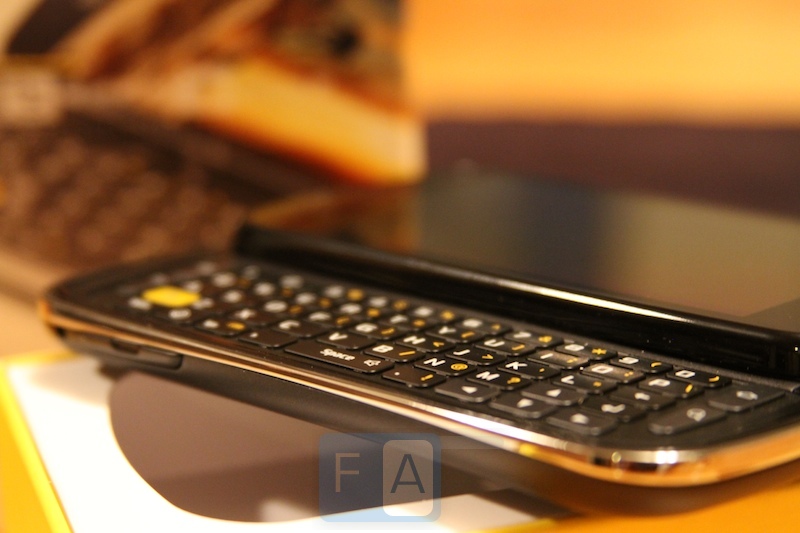
Last but not least is the massive qwerty keyboard. When you first slide open the keyboard you almost have to take a step back due to the massive size. Five rows of keys including shortcut keys for back, menu, home and search. If we had to describe the keyboard in one word it would be wow wow wow. It took us less than a week to become comfortable with the keyboard — typing quickly was no problem after that. The keys are evenly spaced and provide a good tactile feel when pressed. The only complaint is the location and size of the space bar. Reaching across the large phone to the space bar, located in the center, can be challenging if you have small hands. To help ease that pain Samsung included a dedicated expressions key that will force you to create entirely too many 🙂 faces in your post. To say we liked the keyboard is a understatement. If you have ever used the Droid “keyboard” you will understand how much a great keyboard like this is appreciated.
Call Quality
The calls placed on the Epic 4G were clear and we had no issues with dropped calls or reception in our area. It is clear to me that the Epic 4G wasn’t designed to be the perfect phone for voice however it gets the job done without complaints. The Sprint network provides ample coverage in our tested areas and quality was good even with low signal. The ear piece volume was audible even in loud environments. For 95% of users the call quality will be just fine.
The custom dialing pad has large colorful buttons making placing calls simple and error free. Due to the capacitive display dialing is quick and painless even while on the go. The included proximity sensor does a great job of turning off the display when it is placed close to your face. This allows you to rest assured that you don’t hang up on your party while holding the phone. In our test we had no issues with the proximity sensor failing to do its job properly.
Camera/Video
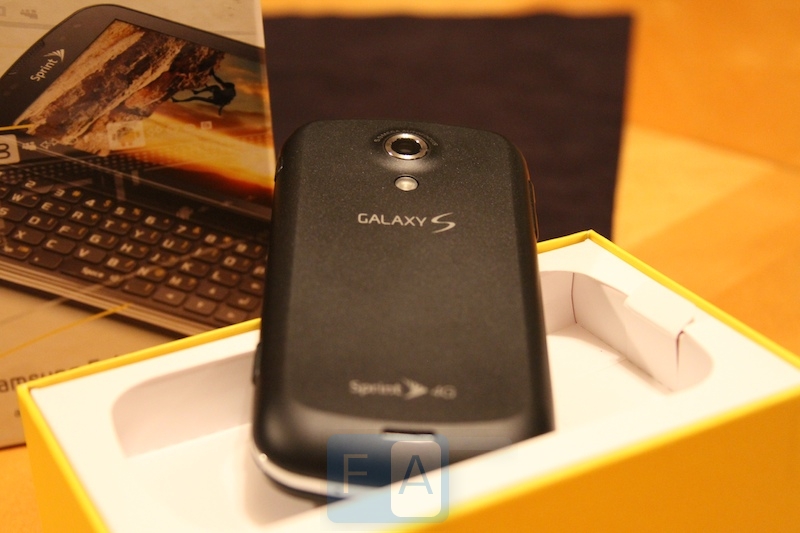
Taking photos on the Epic 4G with its 5.0 mega-pixel auto-focusing camera is a pleasure. To load the camera application simply press the dedicated camera button while the phone is active and the camera application will launch. On the left side of the screen is a slide out drawer containing buttons such as shooting mode (Single Shot, Self Shot, Continuous, Smile Shot, Panorama, Vintage, Action Shot, Cartoon), flash on/off/auto, manual exposure, and settings which loads a more detailed settings panel to allow you to fine tune your camera experience. On the right you have a touch screen shutter button which can be used if don’t want to use the dedicated hardware shutter button. Quick camera mode button which allows you to change from taking photos to shooting video with a quick touch of a button. Last but not least the ride side contains a quick launch media viewer button that allows you to view composed media for previewing, deleting, and sharing.
The quality of the photos taken with the camera are impressive and could easily replace an average point and shoot camera. One of the nice features of the camera application is having the ability to use the touch-to-focus which allows you to touch what you want the camera to focus on to provide a sharper shot of the intended subject. On average the camera takes 3 seconds to focus which for everyday shooting is just fine. If you want to snap shots quicker you have the ability to turn off auto-focus altogether or choose different shooting modes. During our trial I took around 50 photos with good results. For an average consumer the camera will provide more than adequate results.
Camera Samples
Video is becoming more and more popular with mobile devices and the Epic 4G doesn’t let you down in this area. With the 720P (1280×720) HD capable recording you can capture your favorite moments in pristine quality. You also have the ability to capture video at 720×480, 640×480, 320×240, and 176×144 if you prefer these resolutions. The video on-screen buttons are the same as the camera and provide the same functionality.
During our test we found the quality of the 720P recordings to be good but not the best on the market. In natural outdoor lighting the quality was great but indoors we found the video to be a bit noisy for our taste. Depending on your environment your results may vary. Overall the quality is good for both pictures and video. While it may not be the best there is it does come very close and will please even the most critical eyes.
Connectivity and Memory
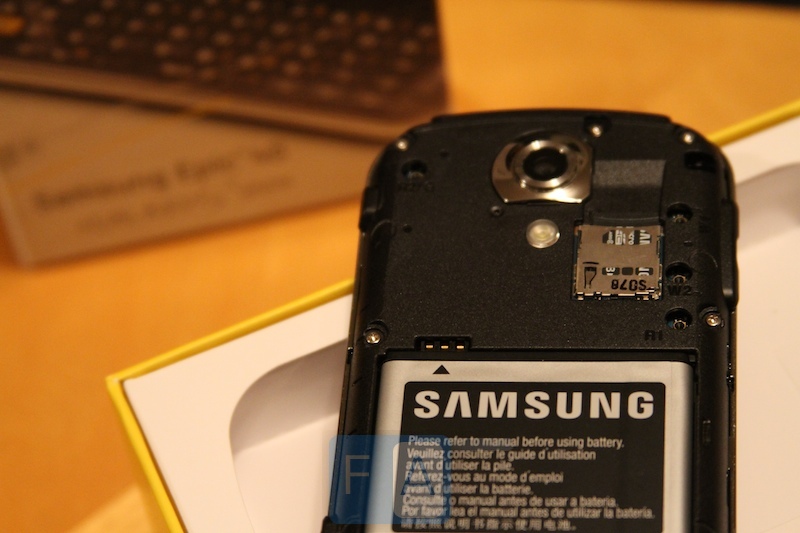
Being a US based Sprint phone the Epic 4G provides 3G dual band CDMA (800/1900 MHz). A big selling point to this phone is that it also supports Sprint’s WiMAX 4G network which on average could give you 3-6 Mbps. Unfortunately at the time of this review 4G was not available in our area so we could not test the performance. At home or on the go in your favorite coffee shop you have the ability to connect via WiFi using 802.11b/g/n for top network performance. Also included are USB 2.0, Bluetooth 2.1, and TV-Output via DLNA.
During out test period the network performance was great, providing high speed connectivity when and where we needed it. Loading websites, downloading applications, and sending emails was all quick and painless for the most part thanks to the large number of connection resources at our disposal.
Out of the box the Epic 4G contains 1GB of memory (512 RAM/512 ROM) which provides plenty of room to grow. Our review unit came with a 16 GB SD card for media storage. In almost all cases this will be plenty of room for any user of the device with room to grow.
Media Playback
Sprint is currently advertising this phone with the following headline “Take movie night to go” and with good reason. Watching movies and viewing pictures on this phone’s 4 inch Super AMOLED screen is simply stunning. Loading your media onto the phone via USB is easy and can be viewed in the Gallary application included with the phone.
We tried several different formats of music including MP3, AAC, AAC+, WMA, FLAC, OOG and WAV and all played without hitch. The music player has a good user interface and allows the browsing of automatically indexed music with ease. The audio quality of wasn’t the best out there but for most ears would be more than fine.
The external speaker is located on the back near the bottom lip of the phone. At full volume the speaker produces good results with low distortion. A small room can easily be filled with the audio providing a true mobile media experience. Due to the location of the speaker it is easy to accidentally cup the speaker with the palm of your hand while holding it. This causes an overly high pitched tone however is easy to avoid if you hold the phone properly.
Software and Experience
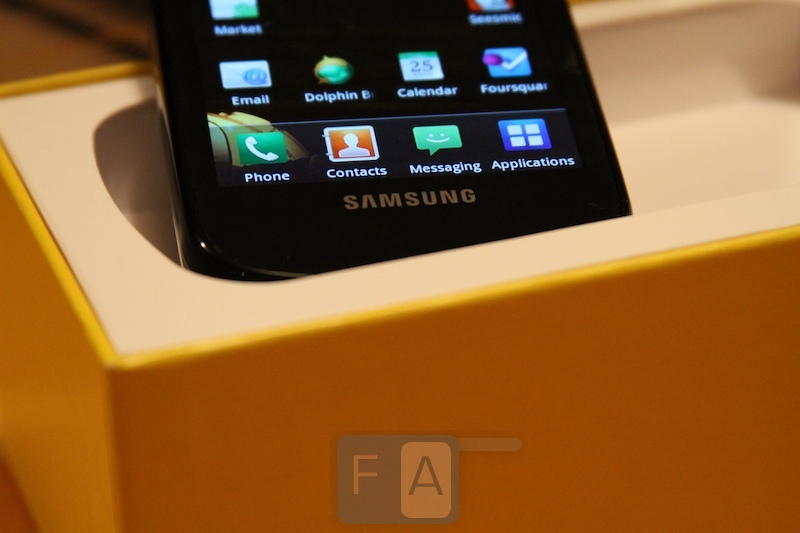
The Epic 4G ships with Android 2.1 along with a promise of 2.2 coming in the near future. The user interface is built upon a custom shell by Samsung called TouchWiz. There are significant differences between TouchWiz and the default Android experience. The most significant being the home screen navigation and application menu.
TouchWiz home screen contains a home navigation bar at the bottom of the screen which contains phone, contacts, messaging, and an application button. When moving between the 7 included home screens the navigation always remains at the bottom of the screen for quick access. In our use we found that the navigation worked as intended and gave us quick access to the most used features of the phone for the average user.
As mentioned before the application menu has also been customized. Unlike the stock Android experience which scrolls the applications vertically the TouchWiz interface works similarly to the home screen. The applications are listed alphabetically and are navigated by sliding your finger left or right through the screens much like flipping through a photo album. TouchWiz is simple, does the job, and makes moving around the phone easy. If there was one area to complain about it would be the lack of customization allowed to the interface due to the TouchWiz implementation.
The Epic 4G comes preloaded with several Sprint applications including Sprint Football, Sprint Hotspot, Sprint Navigation (Telenav), Sprint TV, and Sprint Zone. The one that most interested us was the Sprint Hotspot which allows you to connect up to 5 computers over WiFi to your phone to be used as hotspot. If you are a road warrior this application will save you a lot of time and money in comparison to carrying around a data stick for your laptop. In my testing it worked flawlessly and performance was great on the fast Sprint network.
Another software package that comes pre-installed worth mentioning is the Samsung Media Hub. Unfortunately access is not yet available but in the near future this application will allow you to purchase and rent TV shows and movies from your Galaxy S phone. Samsung is clearly going after Apple’s iTunes store with this offering. Sadly due to the service being unavailable we were unable to comment on the actual experience. The future does look bright for Samsung Galaxy S owners but longevity is key. Will the Media Hub stand the test of time for Samsung? We will hold our opinions until we get our hands on the Media Hub hopefully in the near future.
Enough about technical details lets talk about how the software works under real world usage. During the three week test period the phone was put through three phases of usage. Each phase had a different style of usage and demanded different resources.
Phase one we used the phone as an average Joe by texting, some email, mild browsing and talking with family and friends. Under these conditions the phone worked flawlessly. Performance was extremely fast with no noticeable lag. The full keyboard makes this phone a texting lovers paradise. Using the phone in these conditions we were able to use the phone from around 7AM to 9PM before the low battery indicator came on. While not great this is perfectly acceptable for a phone of this size.
Phase two we ramped up our usage a bit and turned the phone into a business users voice to the outside world. In this phase we used email as if it was going out of style, browsed the web for resources, constantly checked our address book to find our connections and connected with them both through chat and social networks.
For our email we had both GMail and IMAP accounts setup. Using the device to push through our email worked relatively well however there were cases that email was slow in both sending and receiving. For example one day email wasn’t being updated for close to an hour. At that time connectivity seemed to be fine as the phone had at least two bars the entirety of the day so we aren’t sure what the problem was.
Browsing websites was a great experience providing both fast access to information and easy to use finger navigation. For a smartphone the Epic 4G proves to be a great phone for browsing both mobile and non-mobile websites. We only noticed lag in extremely large websites which is to be expected on any mobile device.
Keeping in touch with our contacts was a good experience thanks to the ability to add favorites and quick search options from the home screen. As a business phone it proved to be effective however be ready to keep your charger near by. Starting the day around 7AM the low battery indicator came on around 7PM on average.
Phase three we used the phone as a do all device which includes downloading and using several applications, streaming music and video, watching movies from mass memory, taking pictures, staying online socially 24/7 and for the most part never putting it down. Using the device like this you start to see both the good and bad.
Let’s get the bad out of the way first. While multitasking is a key part of the Android platform we found that at times it lagged while under heavy load rendering the phone useless until the task had completed. An example of this was using the application named Pixelpipe to upload photos to several socially connected services. Each time I uploaded a photo in the background and the phone was busy uploading the entire phone would lag tremendously. During this process it was difficult to switch between applications and the applications that were loaded would be almost unusable. Other cases include when I had 3-5 apps loaded at time the phone would lag as if some type of memory management purging was being completed and the phone would become extremely slow. While not always reproducible it was worth noting that this can occur if you get too application greedy. Under Phase three the abuse shortened battery life to around 5 hours and 33 minutes on average.
Don’t be scared off by the above “bad” things because the good is equally as strong. Under normal use the phone was able to open and close applications extremely quick. The 1 Ghz CPU is evident in this phone from the first time you start the phone. It screams performance even though the multitasking of Android could use a little work. When compared to other phones on the market this is easily one of the faster ones out there. From the standpoint of a social addict this phone provides you with some of the best tools to keep connected and always up to date with what is going on. Combined with a wonderful keyboard this is a combination that is hard to beat. Knowing that this phone is going to get updated to Android 2.2 in the near future should indicate that many of the multitasking issues may go away and you will be left with one extremely high performance phone.
Having used the phone through these three phases it became evident that Android still has maturing to do if it wants to become the standard for all smartphones. One example of this is the lack of consistency within the operating system user interface. Namely in the use of the back button. Some applications use the back button to close the app where others moved back through the application screens. You never know if the application is running in the background or if it has been closed. Luckily the TouchWiz interface includes a built-in task manager to troubleshoot this. Little things like this affect the entire user experience and can have vast effects on battery life.
Final Thoughts
The Samsung Epic 4G offered exclusively at Sprint overall is a great phone. The biggest factor for us was a fantastic slide out keyboard which made the device feel more like a mobile computer than a smartphone. Combine that with good performance and a killer media experience and you have yourself one great phone. If you are looking for an all around good phone that allows you to capture life through a good camera, watch media on a large beautiful screen, and stay connected with the use of a wonderful keyboard this is the phone for you. Just remember to keep a charger near by because the battery life on this phone will suffer the more you use it. The Epic 4G is offered from Sprint and can be yours for $249.00 under a two year contract.





